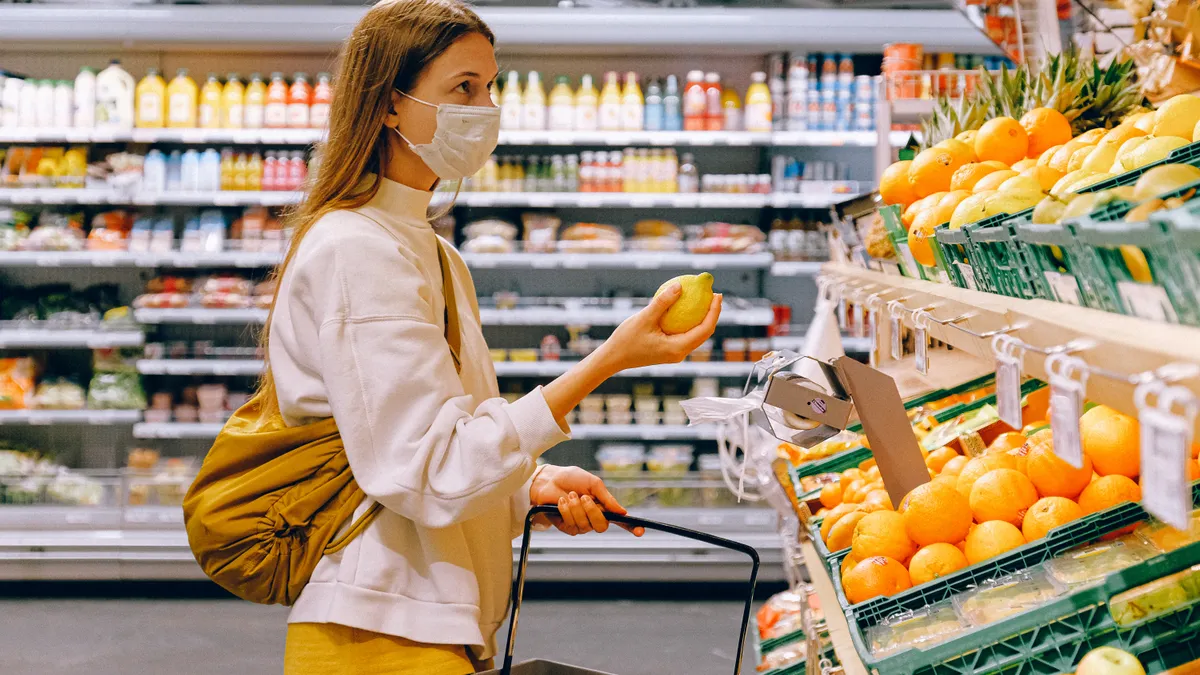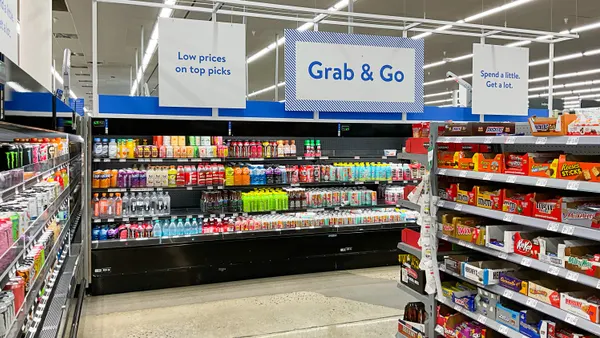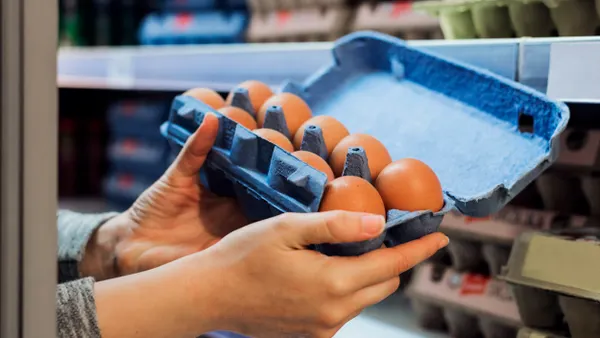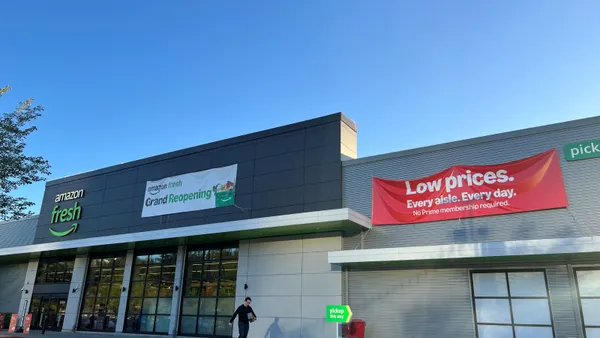Dive Brief:
- CPG trends created during the pandemic, such as premiumization and a shift toward larger package sizes, will ease in 2021 as consumption moves away from home, according to a report from IRI. Although demand for CPG products will continue to be “unprecedented” through 2021, 65% of categories will see sales declines as they lap 2020's explosive growth, the market research firm predicted.
- As more items are regularly in-stock, consumers' price sensitivity also will increase. This factor, along with the higher costs of increased mobility, will drive consumers toward value and private-label brands, and "right-sizing" packages, IRI expects. But premiumization, indulgence, taste exploration, health and wellness and sustainability will continue to drive sales in some categories.
- Dramatic change in the CPG space was the expectation rather than the exception last year. Now, IRI anticipates manufacturers will need to gear up as vaccine distribution accelerates and consumers return to many of their habits from before the pandemic.
Dive Insight:
The report from IRI highlighted several themes that defined 2020, including the triple-digit growth in e-commerce; a double-digit increase in frozen products and alcoholic beverages; premiumization across multiple categories; and significant growth in sustainability claims, including plant-based ingredients and recycled packaging.
While these trends will remain in place, they will continue to evolve. For example, after spending the majority of the last year working to stay healthy, many consumers have discovered the benefits of functional foods with health halos. Last April, the International Food Information Council's annual Food & Health Survey found about one in five consumers said they were making healthier choices than usual because of the pandemic.
This lead to a proliferation of food products featuring better-for-you claims, with IRI reporting growth last year in both premium and super-premium categories from consumers at all income levels. But as the pandemic drags on, fewer people expect to be able to afford such products. Going into 2021, 28% of consumers were worried about being able to afford enough food, according to results of a separate IFIC survey released in December.
As a result of consumers pinching pennies, IRI sees value products and private label as an emerging pocket of growth. This focus on finances also may have some unexpected benefits for categories such as frozen products, which are traditionally seen as an economical choice to save both time and money. In 2020, sales of frozen seafood and fruit saw double-digit gains, according to IRI, and that upward growth trend could continue into 2021. An April survey from the American Frozen Food Institute found 7% of consumers who previously, rarely or never purchased frozen foods pre-pandemic were buying these products.
During the pandemic, limited mobility spurred U.S. consumers to learn to cook more in their own kitchens, giving fresh foods an 11% sales boost and meat a 35% lift in 2020, according to IRI. Younger generations drove sales growth in baking and comfort items. Even though many consumers are tiring of cooking at home, a survey by Hunter found 71% say they will continue to do so following the pandemic.
IRI also identified sustainable products as a key opportunity for brands. One major category driving interest is plant-based protein alternatives. Dollar sales rose 26% for products with claims such as "contains pea protein" or "contains seitan protein" in 2020, according to IRI. Nielsen data showed through Oct. 3, 2020 that meat alternative sales were up 129% compared to the first nine months of 2019.















